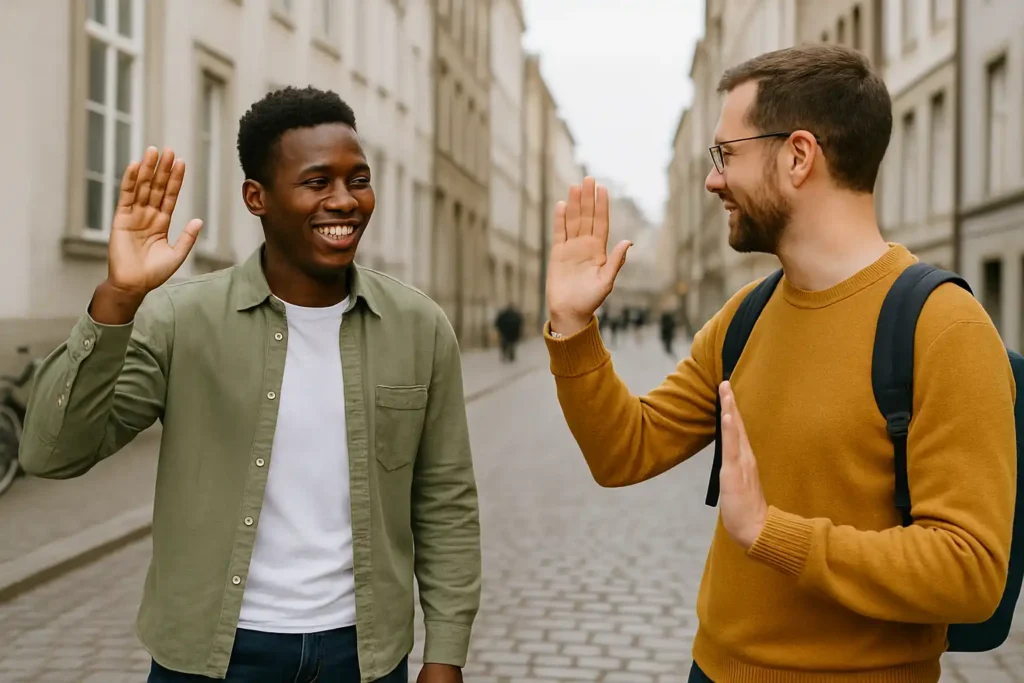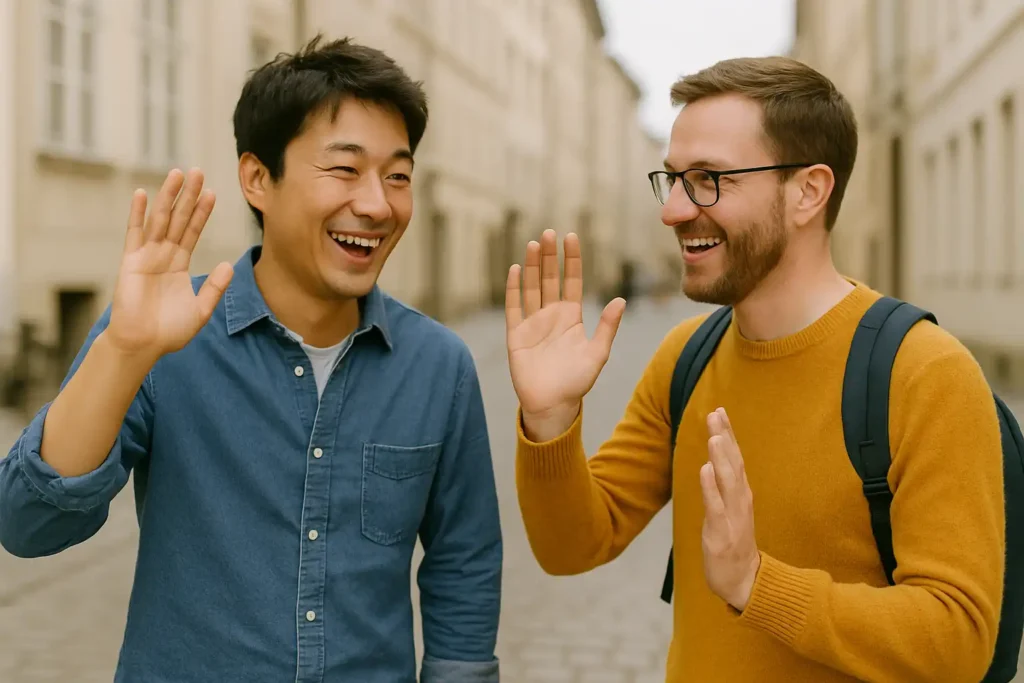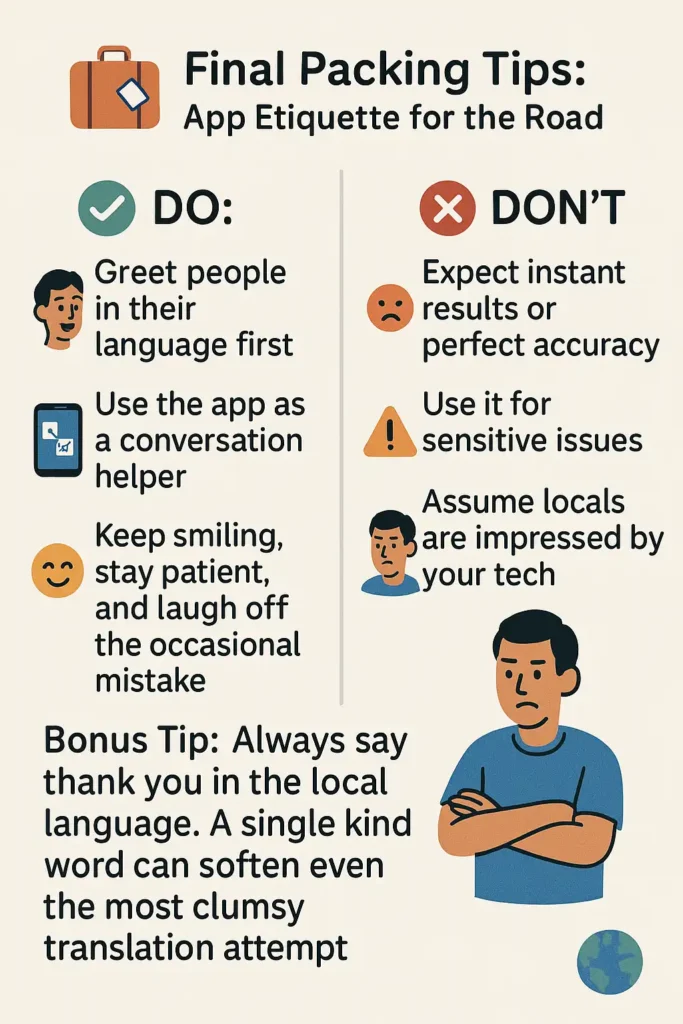Are translation apps rude when traveling? Learn polite ways to use them, when not to, and smart safety tips to avoid awkward or risky moments abroad.
Translation apps have become essential travel companions, especially when visiting countries where English isn’t widely spoken. Whether you’re using Google Translate, DeepL, or Pleco, these tools can help you order food, navigate cities, and connect with locals. But are they always the best choice? In this guide, we answer common traveler questions and show you how to use translation apps effectively and respectfully.
In this blog post, we’ll dive into:
- Whether translation apps are considered rude
- When NOT to use them
- How to use them effectively
- Safety concerns
- And a few smart tips to level-up your communication on the go
Let’s break it all down—no phrasebook required.
🤔 Is It Rude to Use Translation Apps When Traveling?
Short answer: Not at all. Most people appreciate your effort to speak their language—even if it’s filtered through an app.
But it can feel rude if:
- You shove your phone in someone’s face without context
- You rely solely on the app without even attempting a greeting
- You ignore local cues or customs

Politeness Pro Tip: Always start with a greeting in the local language. Then introduce the app as a helper, not a substitute for human connection.
Think of the app as a bridge—not a wall.
🟩 Q: Are translation apps rude to use in another country?
They’re not rude—if used respectfully. Most locals appreciate your effort, especially if you greet them in their language first.

Instead of silently holding up your phone with translated text, try saying:
“Excuse me, I don’t speak much [local language], may I show you this translation?”
A small effort = a big impression.
❌ When Is It Better Not to Use Google Translate?
While translation apps are great for everyday travel needs, they’re not always the right tool.
⚠️ Avoid using them when:
| Use Case | Why It’s Risky to Use Automated Translation | Potential Consequences |
|---|---|---|
| Legal or Medical Documents | Automated tools often miss critical legal or medical nuances. | Misunderstandings can lead to lawsuits, misdiagnosis, or treatment errors. |
| Sarcasm, Humor, or Slang | Most apps struggle with tone, cultural context, and wordplay. | Phrases like “I’m dead serious” might turn into nonsense or something offensive in another language. |
| Tattoo Translations | Machines lack context and don’t verify idiomatic accuracy. | You could end up permanently inked with something like “Soup Noodle” instead of “Freedom”. |
| Marketing or Business Content | True localization needs more than just word-for-word translation—it requires understanding the audience and culture. | Poorly adapted messaging may confuse, offend, or simply fail to connect with the target market. |
| Sensitive or Confidential Info | Many free apps store or transmit data, especially when cloud-based. | Sharing things like ID numbers, contracts, or private communications could result in a data leak. |
🔐 Are Translation Apps Safe?
Generally, yes—but like anything digital, there are things to be aware of.
✅ Safe to use for:
- Reading menus, signs, or maps
- Booking transport or hotels
- Asking directions
- Ordering food or basic conversation
🚨 Use caution when:
- Entering sensitive personal data
- Relying on the cloud (vs. offline mode)
- Using third-party apps with unclear data policies
Translation App Safety Overview
SAFE USE CASES | RISKY USE CASES
------------------------------|----------------------------
Ordering food | Translating medical info
Asking for directions | Inputting passport numbers
Reading signs | Discussing legal terms
Basic conversation | Confidential business docsTip: Tip: Use trusted apps with strong privacy policies like Microsoft Translator or DeepL, and download language packs in advance for offline use.
🌍 How to Use Translation Apps When Traveling
Here’s how to use translation apps like a human, not a robot:
1. Learn 5 basic phrases
Hello, thank you, excuse me, please, and bathroom. Trust us—these five will make your life a lot easier.
2. Use the camera feature
Apps like Google Translate can instantly scan and translate restaurant menus, road signs, even product labels. Super helpful in a rush.
3. Use the speech function sparingly
It’s tempting to press the microphone and talk at full speed, but remember: these apps aren’t perfect. Speak clearly and slowly.
4. Let locals type back
Flip your phone around, let them type or speak. It makes the exchange more natural—and more accurate.
5. Have backup phrases saved
If you know you’ll be asking the same question a lot (e.g., “Is this vegetarian?”), save it in advance.

🧳 Final Packing Tips: App Etiquette for the Road

n total, translating apps are incredibly helpful tools when you’re traveling—as long as you use them with courtesy, caution, and cultural awareness. They’re not rude by nature, but how you use them can make all the difference. Start with a smile, lead with a greeting, and use the app as a bridge to genuine connection—not as a crutch.
So the next time you’re packing your bags, remember: translating apps belong in your toolkit, but manners still belong in your pocket.
Want more smart travel tips or need help adapting content for international audiences? Let’s talk!
Translation Company vs. Private Agency: Which One Fits Like a Glove?
How Translation Helps Preserve Culture in a Globalized World
